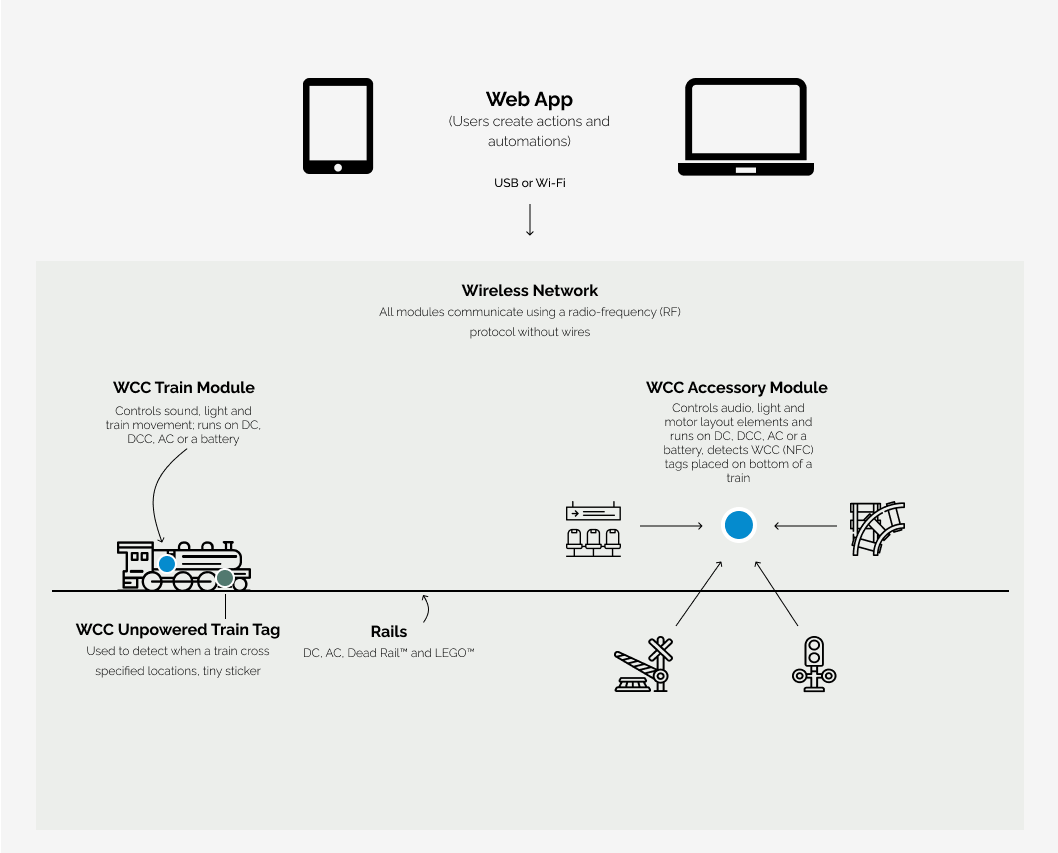
Order and install an RC board
Install a board into a car/toy. Boards can be purchased from our store.
Control a car/toy from a web browser or custom remote controller
Update settings and control your car/toy directly from a web browser, without the need for additional controllers. You can build custom controllers as well.
Order and install a train decoder
Install a decoder into a train (versions with NEM-652 connectors and bare boards without wires are available). Decoders can be purchased from our store.
Control a train with DCC or from a web browser
Update decoder settings and control trains directly from a web browser, without the need for command stations or additional tools. DCC support is also included.
Order an accessory decoder and connect accessories
You can connect almost anything to our DCC accessory decoder and even implement custom logic, thanks to its open-source firmware based on Arduino. Decoders are available from our store.
Control accessories with DCC or from a web browser
Update decoder settings and control accessories directly from a web browser, without the need for command stations or additional tools. DCC support is also included.
Order accessory and train decoders
Install train decoders and connect accessories to accessory decoders. Each decoder communicates wirelessly with the others. Decoders are available from our store.
Control and test trains/accessories from the web app
Update decoder settings or control accessories directly from a web browser, without the need for command stations or additional tools. DCC support is also included.
(Optional) Put NFC tags on a trains and connect NFC readers
Tags are wireless, unpowered 10 mm x 18 mm stickers used to track train positions and are attached to trains. NFC tags and readers are available from our store.
Create interactions and automation in the web app
Change decoder functions, settings and logic directly from your web browser. No command stations required. For example, you can "tell" a decoder to display a message on a station display #2 if a train #4 cross a tag #5

